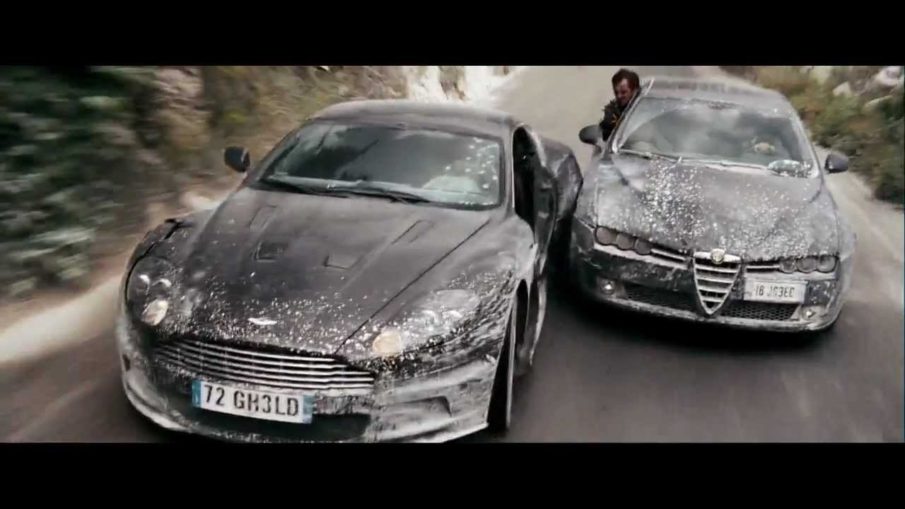Camp Two was a different pudding.
Not to say that the physical or mental pressure eased. But now it was selection by training as opposed to Camp One’s selection by torture.
Nestled in rural Wales, Camp Two resembled an operational Detachment base. There was a bar, a TV room, lecture rooms, ranges, etc.
Women and men lived together. This, of course, was calculated—the DS wished to know how candidates interacted with each other when under pressure. They monitored, for example, how much candidates drank at the end of a stressful day or how they interacted with the opposite sex. (Steamy affairs did happen. And the only SBS operator to ever fail selection did so because he was caught ‘fraternizing’ with a female candidate.)
The six-month program had seven phases: the driving phase, the photography phase, the surveillance phase, the unarmed combat and weapons phase, and the fieldcraft and reconnaissance phase.
At the end of each segment, candidates had to complete an exercise testing the phase’s skill to advance to the next.
There were no rollbacks. Unsuccessful candidates returned to their units.
The DS’ attitude remained cold and professional. Lengthy debriefs followed every exercise, and instructors encouraged candidate feedback.
Training deaths did happen, and attrition remained high. The graduating few went straight to one of the four operational detachments.
Security, if possible, was even tighter since IRA terrorists were seeking for the 14 Int’s training sites. Only the local police chief knew about Camp Two. Otherwise, the locals wondered who this peculiar bunch was and why it drove like that.
Well, there was an explanation for the mad driving: Army rally instructors.
They ran the advanced driving phase. Candidates became expert at high-speed driving, backwards-driving, moving-vehicle entry methods (not through the window, as the CIA practiced!), controlled crashing, skid recovery, vehicle weaponization, vehicle recognition, and counter-ambush driving.
Like rally contestants, candidates worked in pairs—one behind the wheel speeding at 80mph through unsuitable countryside roads, the other reading a map, which was often coded, and gushing directions; an instructor at the back grasping for dear life.
The phase’s motto: drive as fast as possible.
When pulled-over, they used a codeword, to the extreme frustration and curiosity of the local cops, and then vanished.
Accidents, inevitably, did happen—some fatal. But training had to be realistic. In Northern Ireland, their lives, and more importantly their colleagues,’ often hang on agile and aggressive driving.
Next, it was time to snap some pictures. In the photography phase candidates mastered everything from humble Kodaks to video cameras with advanced infrared and night vision lenses.
The phase’s aerial portion was a favorite. Candidates flew on Gazelle and Lynx helicopters, known as the ‘Bat Flight,’ snapping photos and then deciphering them.
Then it was surveillance time.
Taught by the SAS, candidates learnt mounted and dismounted surveillance and counter-surveillance, different methods of entry, lock-picking, alarm-bypassing, bugging and planting cameras in houses and on people.
Actors coached them on disguises and even on how to change their gait and posture; vocal experts helped them perfect their Irish accent. They even learnt which wardrobes and haircuts were most suitable.
Unarmed combat and weapons phase followed.
Candidates practiced different holds and blows, taken from the WWII SOE curriculum.
As for weapons, they mastered everything within, and without, the British arsenal: the MP5, SLR, G3, HK53, M16, M15, Browning Hi-power, Walter PKK, Remington 870 shotgun, AK47, AKM, Uzi, M60, RPG-7, Tokarev and Makarov pistols, flashbangs, and grenades.
They went everywhere armed (even in bed), and spent countless hours and thousands of rounds at the range. Instructors kept them on-edge with realistic, surprise exercises and scenarios, always with live ammo.
In Hereford, they trained at the SAS killing house in hostage rescuing. The approach taught, however, was different from standard SAS for they’d respond only to scenarios such as the immediate rescue of an agent and not to ‘normal’ hostage situations since that was an SAS job.
Then it was fieldcraft and reconnaissance. Candidates perfected how to approach targets, plan routes, establish and extract from observations posts, both urban and rural.
Another valuable skill taught was checkpoint-reaction. Northern Ireland was swimming in them. Everyone used them, the British, the RUC, the IRA, and the Loyalists.
Additional skills covered were rudimentary first-aid (they’d be operating within towns and close to hospitals, so no advanced training was needed), and interrogation training.
A week-long exercise awaited those left standing. Using everything they learnt, candidates had to foil a terrorist cell’s (SAS troopers) hit.
In the end, less than 30% of those who knocked at their unit’s intel officer’s door went to Northern Ireland as operators.
Featured image courtesy of YouTube










COMMENTS
You must become a subscriber or login to view or post comments on this article.